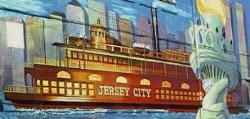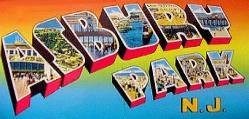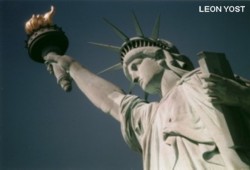 |  |  |
|
| ||
 |  |  |
 |  |  |
|
| ||
 |  |  |
|
|
By Glenn L. Jepsen
Edited by GET NJ, COPYRIGHT 2003
During its life growth a mastodon
may have had as many as six teeth
on each side of each jaw, above and
below, a total of twenty four. These
came in in a series, and formed excellent chopping devices with the
ridges of the upper teeth fitting into
the furrows of the lowers. By the
time the sixth tooth in a series was
erupted the "nipples" on the crowns
of the front two or three, sometimes
called "milk teeth," had been worn
down by constant use to flat surfaces and were usually shed. The
first two of these teeth had two cross
ridges formed by pairs of cusps and
the others, except the sixth which
had four or five ridges, each had
three. Very old individuals lost all
but the last tooth, the sixth, in each
series, but these four teeth were very
large, some reaching a length of
eight inches or more and a weight of
several pounds. The roots of these
teeth formed long prongs that were
solidly anchored in bone. Mastodons
probably didn't live as long as elephants do because the "nipple teeth,"
beautifully designed as they were for
twig cutting, wore away rapidly,
and no mastodon could survive as a
gummer.
Male mastodons had larger molars
and much longer tusks than lady
mastodons and the left and right
rows of their cheek teeth were more
nearly parallel. Also in males the
space was greater from the tusks to
the other teeth.
Mastodon teeth inside the mouth
were smaller than elephant teeth and
instead of having rather flat chewing-surfaces with many low ridges
running from side to side, the unworn crowns of the cheek teeth of
young mastodons had a few prominent cusps, covered by enamel. This
shape led Cuvier to invent the term
"mastodon," which has Greek roots
meaning "nipple tooth," as a descriptive name.
These teeth are so different from
elephant molars that early explorers, to whom elephants were familiar, regarded them as belonging to
some kind of wholly different animal
– it was not believed that the tusks
and cheek teeth could possibly belong to the same creature.

|
|
| 08/18/2012 11:10 PM |
|
Computer Repair Blog XP Local Area Connection stuck at Acquiring Network Address |
 Your Ancestors' Story |
 Bruce Springsteen's Jersey Shore Rock Haven! |

|
UrbanTimes.com |